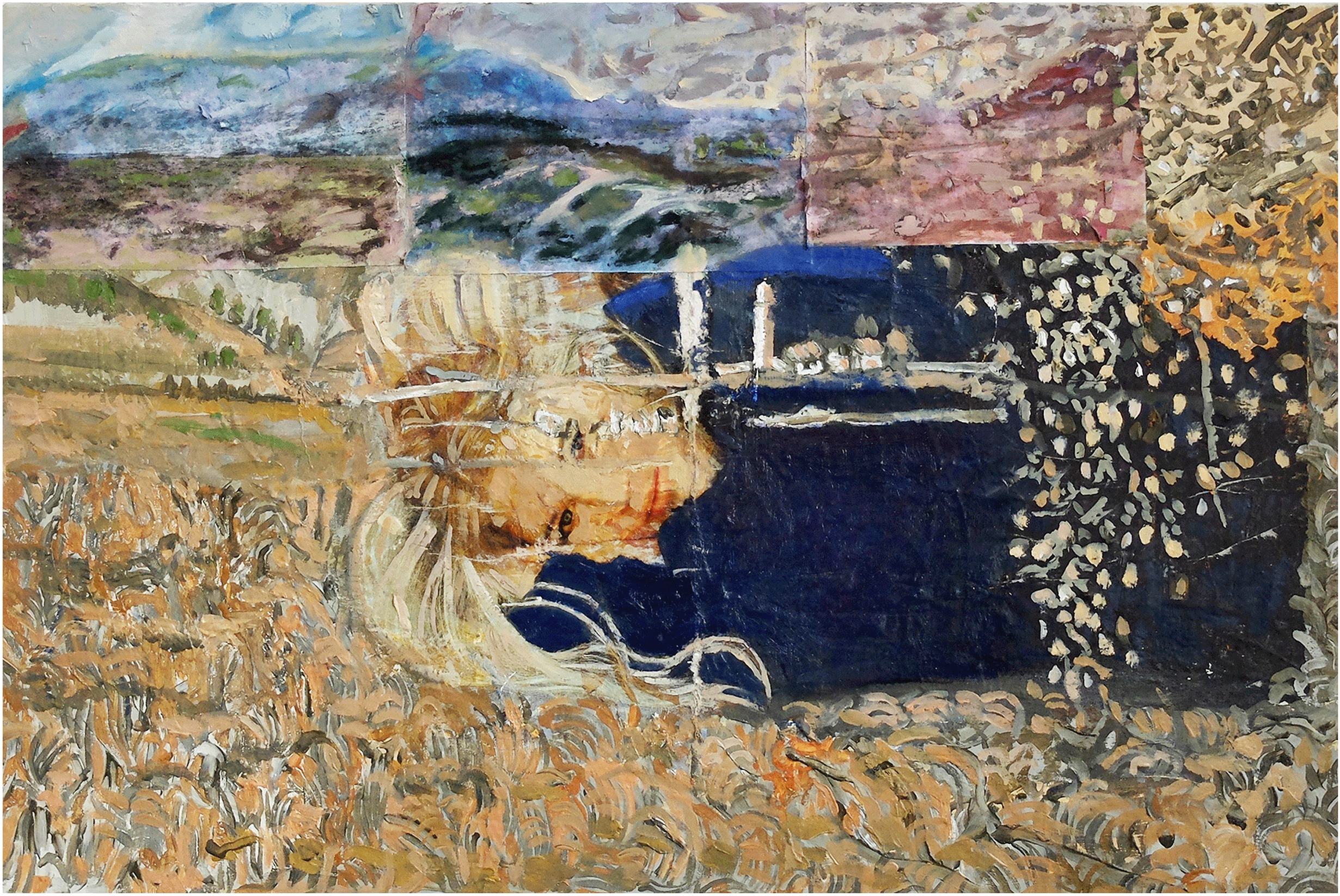On a first visit to the Olivier Cornet Contemporary Gallery, it is immediately impressive. Facilitated by its large windows, it is a bright open space that invokes a grander scale than this single room in a Georgian town house, normally should allow. The gallery has curated Vicky Smith’s multimedia exhibition, The Cold Bark Against My Back, running until April 3, with a free admissions booking slot on the Gallery’s website. The balance between tradition and experimentation is obvious on first impression. The paintings, which are primarily figurative, are hung on the walls in a conventional manner, evenly spaced at eye-level. Meanwhile, experimental 3D works ranging from semi to fully abstract pieces are laid out on the floor and shelves in a cyclical pattern.
Themes of womanhood, domestication and escape from the traditional female emerge in this thought-provoking display. Women are notably the subject of most of the works. One Week Last Summer amalgamates a portrait of a woman with a landscape. The landscape is reminiscent of Van Gogh’s The Harvest, depicting arable farmland leading to distant hills, through which an image of a woman laid on her side, is interwoven through. The disparity in perspective between the two scenes presents the woman as an almost giant-like figure, perhaps a representation of the primordial deity, Gaia. It presents an idyllic scene of humanity with nature.
“Like many others in this collection, the piece includes a lightbulb; a symbol of domesticity and the home.”
Claws of a Fairytale reveals a darker idea of womanhood. The sculpture features a book, displaying the page of an image of Snow White, holding two children in a living room alongside a man, whose face is turned away. Snow White blankly stares straight out. The detachment in her gaze is agitating and brings to mind ideas of domestic unease and dissatisfaction. The larger sculpture, Fold Your Legs I further explores the idea of traditional roles of women in Irish society. The image of the folded legs draws from antiquated interpretations of femininity and the rendering of this image is adequately disturbing. The legs are knobbly and appear almost intestinal. Like many others in this collection, the piece includes a lightbulb; a symbol of domesticity and the home.
One of the most impressive paintings, Reading The Irish Times in Bed, imparts a sense of calm. This, like most of the paintings in the exhibition is mixed media, oil and acrylic on canvas. The triangular composition is very inviting, and the warm shades of yellow give the picture a warm serenity. There is also a great deal of textural complexity in this painting. While the background is painted quite flat, the bed head, sheets and everything closer to the foreground is more layered; like a three dimensional texture. This combined with the composition succeeds in giving the image a great sense of space.
“It reminds us that the oppression of women is not just a relic of a dark past, but a continuum in the present day.”
When entering the exhibition, A Creative Examination assumes its role as the exhibition’s centrepiece. The work’s size is the largest sculpture, and its creative installation gives it a captivating presence. It encompases an open leather suitcase, containing a printed image of the writer, Edna O’Brien, which is overlooked by a medical magnifying glass used for smear tests. Above this, an electric blanket inscribed with a portrait drawing of a woman is suspended from the ceiling. The image presents very nuanced social ideas in a visually dynamic way. There is the blanket: representing an image of homeliness, suspended above the suitcase; which embodies the concept of escape. The choice of Edna O’Brien, whose work grappled with the repression of women in Irish society is fitting — O’Brien broke away from what tradition decided her female place would be. The magnifying glass serves to look at the image of O’Brien and connects her writings about Ireland in the 1950s and 60s, to the present day. It reminds us that the oppression of women is not just a relic of a dark past, but a continuum in the present day.
The exhibition in general is extremely immersive. The sculptures on the floor of the gallery are arranged in a circular spiral form. They are installed in a methodical and accurate way. This makes the visitor feel inside the exhibition, as one thematic experience. A number of the sculptures involve light bulbs and their power cables lead up the walls across the ceiling of the gallery -adding to the immersion of the exhibition; the gallery itself is the artwork, not merely a frame for it.
“The exhibition in this way, successfully reflects the complexity of life as a woman and the struggle between accepting a traditional role that is societal lead, and simultaneously trying to escape it.”
Vicky Smith impressively confronts a wide range of emotions while maintaining continuity. The works thematically portray her complex explorations of womanhood. The exhibition in this way, successfully reflects the complexity of life as a woman and the struggle between accepting a traditional role that is societal lead, and simultaneously trying to escape it.






